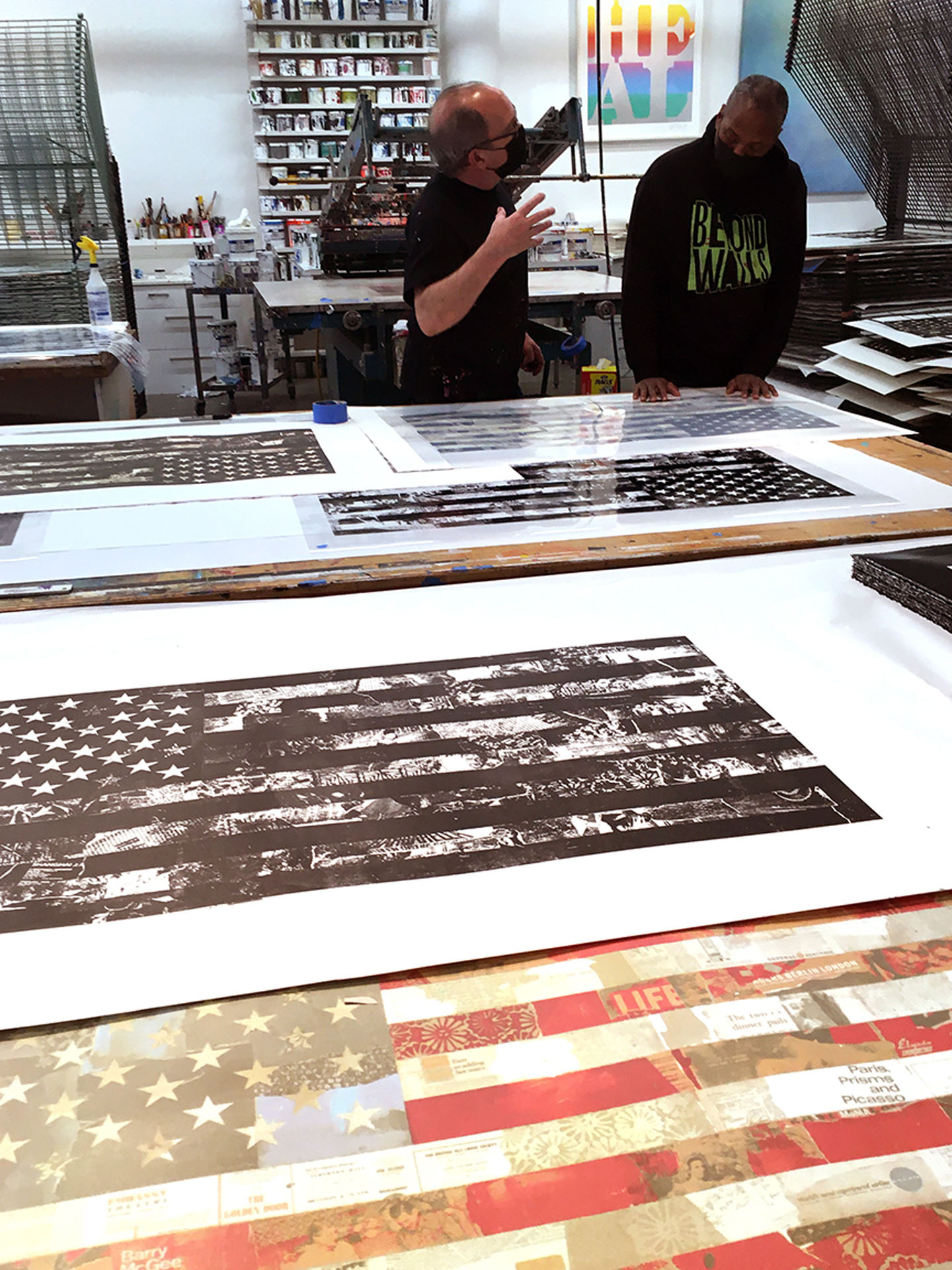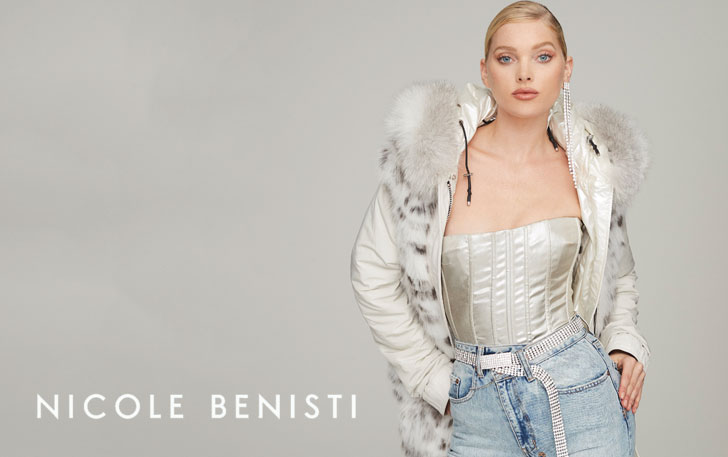A GRAFFITI ARTIST WHO ROSE FROM SPRAYPAINTING SUBWAY CARS TO DESIGNING ALBUM COVERS FOR HIP-HOP ROYALTY IS STILL WOWING THE ART WORLD
BY LAURA D.C. KOLNOSKI PHOTO CREDITS: ROBERT BREDVAD AND JANETTE BECKMAN
Combining innate talent with impeccable timing, artist Cey Adams’ long, successful career paralleled the evolution of rap and hip-hop music. Adams was the founding creative director of Russell Simmons’ Def Jam Records from 1984 to 2000. There he co-founded the Drawing Board, the label’s in-house visual design team, where he created album covers, logos, and advertising campaigns for Run DMC, Beastie Boys, LL Cool J, Mary J. Blige, Maroon 5, Jay-Z, and many more.
“Anything with a graphic, I designed,” recalled Adams. “It was trial by fire and I learned on the job. I had to work like a maniac. I couldn’t let on that I didn’t know how to do certain things so I could continue the opportunity Russell gave me.”

By junior high, the natural-born artist and New York native had discovered graffiti. He dove in during high school, and quickly became immersed in graffiti culture.
“By the 1980s, graffiti started to take off, as did rap, before the term hip-hop became widely used,” he noted. “It was all one movement on different tracks.”
Fortunately Adams never got into trouble for his spray-painted artistic endeavors, primarily emblazoned on subway cars so they would be seen by his peers. After a couple years of college, he left to focus on becoming a professional artist. In downtown Manhattan, he found his “tribe,” among them fellow artists Jean-Michel Basquiat and Keith Haring, whom he exhibited with. Adams, who appeared in the 1982 PBS documentary Style Wars about subway graffiti in New York, met Russell Simmons through a photographer who was shooting his work.
“I wanted to participate in all that was exploding with Russell and [producer] Rick Rubin when they were starting Def Jam,” said Adams, adding, “Rick was still at NYU. Russell gave me an opportunity and a headquarters so I could stay in the city instead of trekking back and forth to Queens.”
Noting that “only Curtis Blow [“The Breaks”] was famous then,” Adams shared his art with the pair and convinced them he could take on album covers. They gave him “plenty of creative freedom” and a 15-year contract.
By 1999, Hollywood had discovered hip-hop, and its founders headed west. Adams and his Drawing Board partner Steve Carr created a new company Drawing Board Graphic Design and moved to Hollywood, too, to make movie posters. They put all their energy into films for ten years. Along the way, Adams created art for Sean Combs’ Bad Boy Records, Uptown Records, The Dave Chapelle Show, and Kenny “Babyface” Edmonds.

Meanwhile, basketball great Earvin “Magic” Johnson was opening movie theaters and working with Starbucks founder Howard Schultz to bring thriving businesses into inner city neighborhoods. Adams reached out to Magic in hopes of joining his Magic Johnson Enterprises to support that effort. Again, the artist was in the right place at the right time.
“Working with them was great and a lot of fun,” Adams said of his time managing Johnson’s creative team. But the artist was eager to return to New York. Adams opened a studio in Brooklyn (where he still works today), and discovered a new clientele seeking his legendary branding skills.
“Big brands started knocking on my door,” he said. “The ‘80s became fashionable again, corporations were looking for authenticity and influencers, and wanted to collaborate. They knew I could help them connect with their audiences. I was able to make the kind of product I wanted to without losing my integrity.” Among the firms were Coca Cola, General Electric, Pabst Blue Ribbon, and Levi’s. Those collaborations evolved into his “Trusted Brands” series of paintings, and a subsequent exhibition.
Today Adams exhibits, lectures, and teaches art at institutions including MoMA, Brooklyn Museum, New York University, Pratt Institute, Stamford University, Howard University, and the Brooklyn Academy of Music. He co-authored DEFinition: The Art and Design of Hip-Hop (2008, Harper-Collins), praised for its “historical depth that only an insider like Cey Adams can provide.” The artist also designed Def Jam Recordings: e First 25 Years of the Last Great Record Label (Rizzoli). “I like to think of myself as a representative and ambassador of the culture,” he said.
Adams is currently compiling a retrospective coffee table book and exhibition titled DEP-arture: The Art and Design of Cey Adams, focusing on his life’s work, with publication expected later this year. “It will show me moving away from my hip-hop roots and returning to my artistic beginnings,” Adams said.
Prior to the pandemic, he completed a project with Jon Bon Jovi, and has a 50-foot billboard gracing 125th Street in New York a collaboration with his friend, chef Marcus Samuelsson.
Adams has turned to collage as an alternative to spray paint. “No fumes,” he noted. He came to appreciate the medium while teaching art to children. “It’s a fun lane that caught on like lightning in a bottle,” he said. “With collage I can make works in my own voice.”

“Cey’s collages explore the relationship between transformation and discovery,” said renowned printmaker Gary Lichtenstein (Mana Gallery, Jersey City). “His practice involves dissecting imagery and paper elements to build multiple layers of color, texture, shadow, and light. Our collaboration reached a whole new level while working on the PAN AM silkscreen edition. The richness of design and imagery, together with our ongoing dialogue, served as the foundation of what would emerge as a vibrant, nostalgic, and hopeful print.”
The pair recently held an artist’s talk in Manhattan about their latest project a print edition of Adams’ “Love” murals that he created across the country. “I adore the work Gary does,” Adams said. “My first American flags were for Gary. Creating the PAN AM silkscreen print with him was my dream project. Our comfortable back-and-forth rhythm in the studio feels very natural.”
Cey Adams ceyadams.com / gleditions.com


